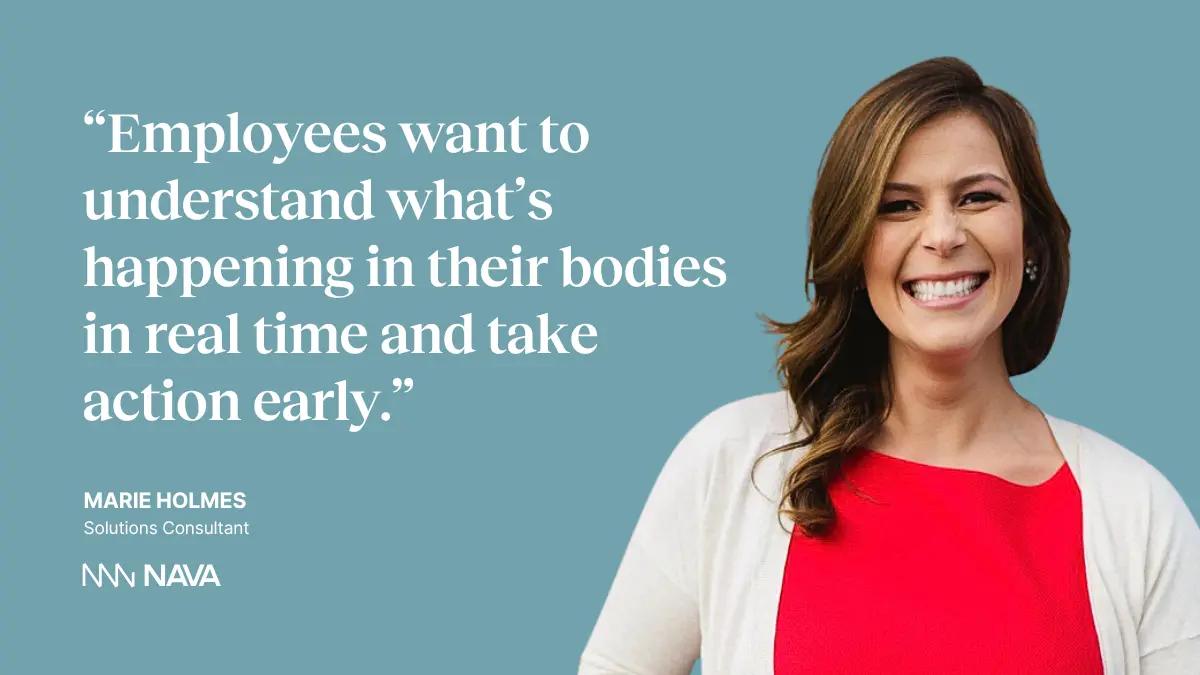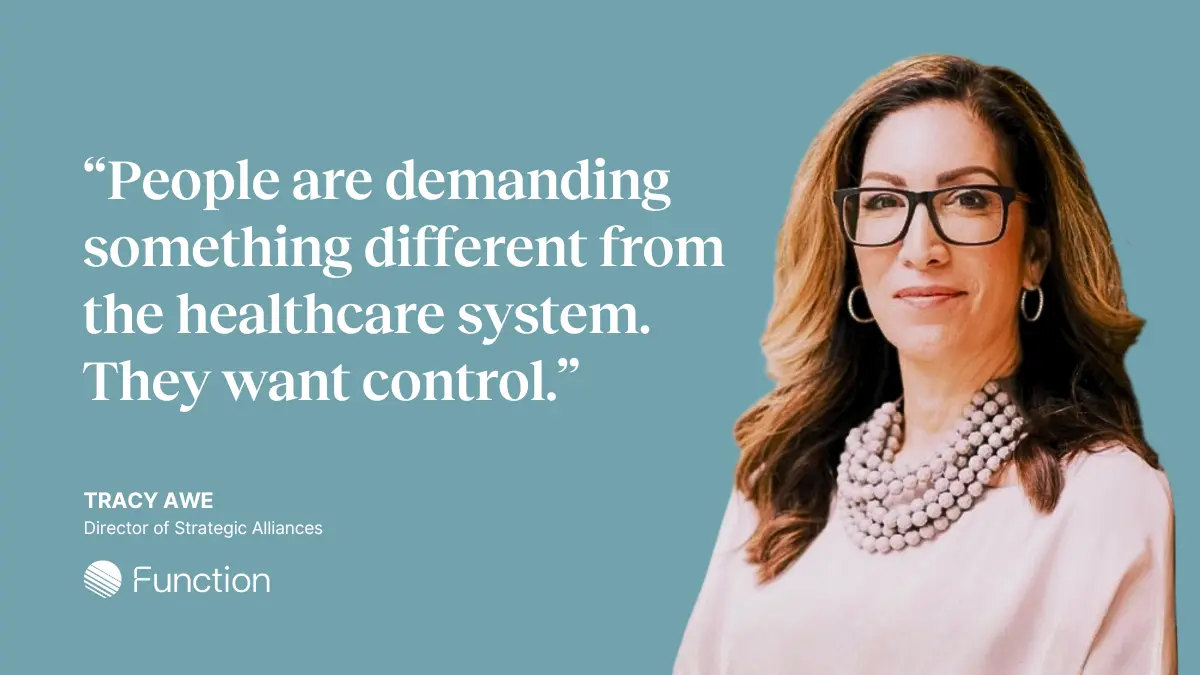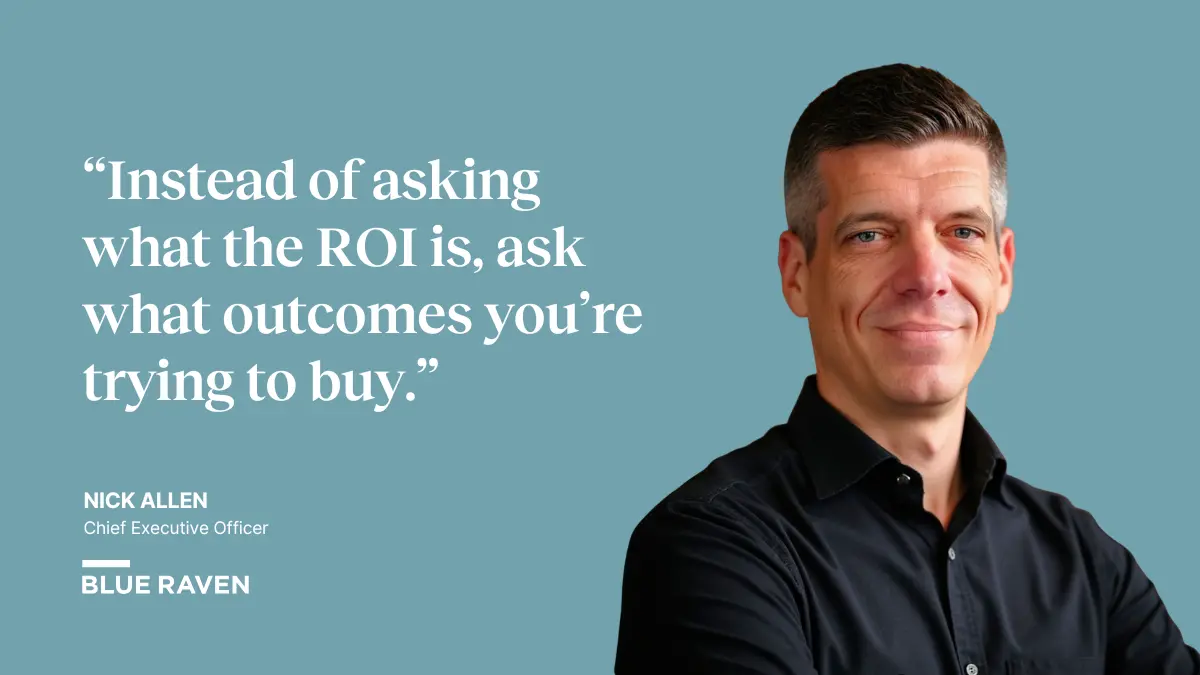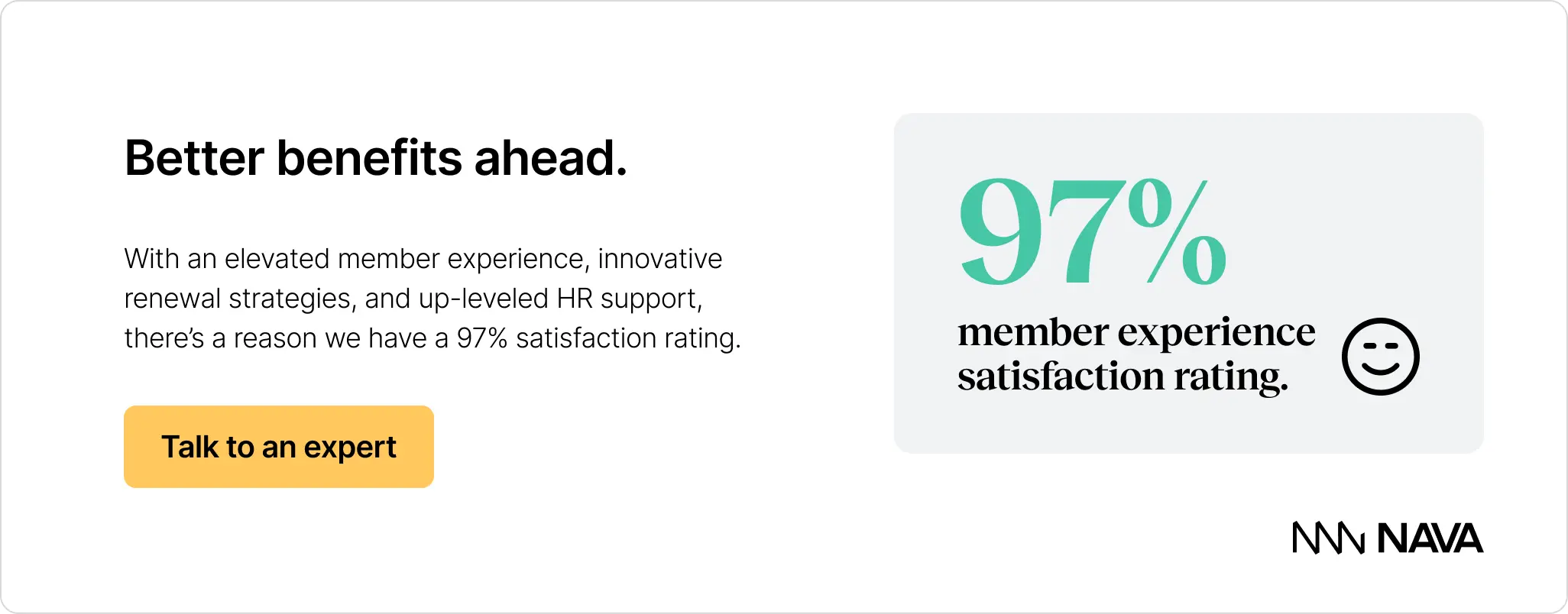Proactive healthcare 101: why prevention pays off for employers

Employees want more control over their health, and employers want predictable costs. Proactive healthcare bridges both needs by using prevention and data to create healthier, more engaged teams. This article shares key insights from Nava’s recent webinar, How Health Insights Drive Smarter Decisions, on why prevention is becoming the new standard for wellness ROI.
Healthcare costs are rising faster than wages, and employers are running out of room to absorb them. At the same time, employees are asking for more — more personalized care, more access to their health data, and more proactive ways to stay well.
That shift is redefining the value equation in workplace wellness. The new ROI isn’t just about managing claims. It’s about proactive healthcare: helping employees detect, prevent, and manage health issues early using data-driven insights.
These ideas were front and center during Nava’s recent webinar, How Health Insights Drive Smarter Decisions, where experts from Function Health, Blue Raven Actuarial, and Nava unpacked how HR teams can use data to build healthier, more resilient workforces.
At Nava, we’re seeing employers move beyond reactive cost control toward proactive health investment, improving outcomes for employees and budgets alike.
What is proactive healthcare?
Proactive healthcare is an approach that focuses on prevention, early detection, and data-driven decision-making, rather than waiting for illness or high-cost claims to occur.
It combines continuous health monitoring, access to personalized data, and preventive interventions to help employees manage their health before problems escalate. In the workplace, that can include programs like regular biomarker testing, digital health tracking, and coaching that supports long-term wellbeing.
For employers, proactive healthcare means shifting resources from reactive claims management to preventive strategies that improve outcomes and reduce costs over time.
At Nava, we see this as the foundation for the new ROI of employee wellness and one that measures success not just by dollars saved, but by healthier, more engaged employees.
Why proactive healthcare is redefining employee wellness
Traditional wellness programs often focused on engagement rates, fitness challenges, or one-time screenings. But those efforts don’t always translate into measurable health improvement or cost savings.
Proactive healthcare takes a different approach: it focuses on early detection, personalized data, and continuous visibility into employee health.
This new proactive healthcare model gives employees more control and employers a clearer path to long-term ROI.

Why employees are demanding a more proactive healthcare experience
Healthcare costs keep rising, and employees are feeling the strain. Today, many already use wearables like Apple Watch, at-home test kits, and health apps to understand their fitness, sleep, and even their heart rhythm or stress levels. That experience has changed expectations. Employees now want the same transparency from their healthcare benefits: clear insights, early warnings, and data they can actually use to stay healthy.
That cultural shift has forced employers to adapt. Benefits strategies that rely on annual checkups or reactive claims management can’t keep up with employee demand for access, insight, and prevention.

The measurable ROI of proactive healthcare
Investing in early detection and prevention isn’t just good for employees — it’s a proven cost-saver.
A meta-analysis by the Integrated Benefits Institute (IBI) found that across 61 studies in 25 years, every single one showed a positive economic impact from early detection programs. None showed a negative result.
The cost differences are striking. Treating diabetes early can average around $1,500 per employee each year, compared with roughly $7,500 when detected late — five times higher. For conditions like COPD, early intervention costs about $1,800, while late-stage care can exceed $40,000 per patient.
When employees identify and address health issues early, they stay healthier, maintain productivity, and help prevent large claims from hitting the plan, improving both workforce well-being and the employer’s bottom line.

How to measure wellness program ROI
Wellness program ROI isn’t just about claims savings — it’s about long-term outcomes. Employers that take a proactive approach measure ROI through behavioral, clinical, and financial metrics.
Smarter ways to track ROI include:
- Pre-post analysis: Compare claims and outcomes before and after implementation.
- Cohort matching: Compare employees who participate to similar nonparticipants.
- Counterfactual modeling: Estimate what costs would look like without the program.
For smaller employers, Nick Allen from Blue Raven Actuarial recommends starting small: “Pilot programs allow HR teams to test impact with minimal budget risk.”

How to launch a proactive healthcare pilot
You don’t need to overhaul your benefits overnight. A pilot program lets you test impact, measure engagement, and build internal buy-in before scaling.
Step 1: Identify a focus area
Choose one high-impact condition such as diabetes, hypertension, stress management, or other areas where early detection and proactive support can meaningfully reduce future claims.
Step 2: Choose a data-driven partner
Select vendors or platforms that offer clear visibility into lab data, engagement metrics, and outcomes. Look for solutions that make it easy to measure impact and integrate with your existing benefits ecosystem.
Step 3: Incentivize participation
Financial incentives can significantly increase employee engagement. According to the Kaiser Family Foundation, large employers that offer wellness incentives see an average 50% participation rate in health risk assessments, compared with 31% among those without incentives.
In other words, subsidizing participation works. But the real lift comes when incentives are combined with clear communication and ongoing support from leadership.
Step 4: Measure, share, and scale
Track outcomes early and often. Share success stories, highlight measurable improvements, and use data from your pilot to refine and expand the program company-wide.
Building a culture of health ownership
Launching a program is one thing, but sustaining engagement is another. As Tracy Awe put it, “A single email won’t cut it. Launching is about activation, not announcement.”
Employers who see the most success:
- Treat wellness as a year-round conversation
- Use leadership visibility and storytelling to normalize proactive care
- Make participation frictionless through apps, reminders, or incentives
When health ownership becomes part of the company culture, participation climbs and ROI compounds.
Data: the next frontier in proactive healthcare
As digital health tools evolve, data is becoming the foundation for better care and smarter benefits.
Platforms like Function Health make it possible for employees to track biomarkers and trends over time, while Nava HQ helps employers analyze claims data, model renewals, and forecast spend.
The result: benefits strategies that are predictive, not reactive — turning data into action that benefits everyone.
Key takeaways
- Proactive healthcare is the new foundation for meaningful wellness ROI.
- Early detection programs deliver measurable savings across conditions.
- Data access and participation drive engagement and long-term outcomes.
- Wellness program ROI improves when measured beyond claims data.
- With tools like Nava HQ, HR leaders can make data-backed health investments that create real, sustainable value.
At Nava, we help HR teams make proactive healthcare real—connecting data, technology, and strategy to deliver measurable ROI for employees and employers alike. Talk to a Nava expert to learn how prevention and insight can transform your next renewal.







.webp)